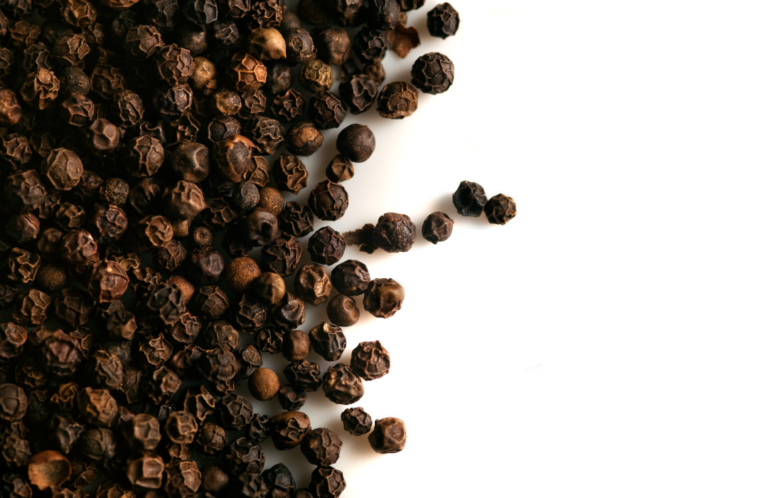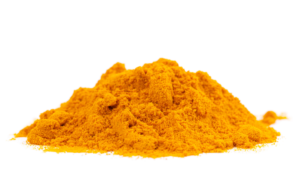Joint pain - a breakdown
For the limbs to move, the joint must be able to bend, obviously, and so, the bones are connected with flexible material such that our limbs are being held together by tissues that are rather susceptible to damage.
As we go about our lives and, hopefully, are moving our bodies we are literally grinding our bones together at the joints which will inevitably damage the tissue structures that are our joints. Though this is normal, it becomes a problem when these tissues get damaged to a certain point that causes pain.
Now let’s talk about pain. Pain arises from the swelling of tissues due to inflammation, a process meant to help heal your body. Essentially, inflammatory cells and fluids concentrate at the location of tissue damage as a means to heal and protect. However, the inflammatory fluids build up and can easily get out of control to the point where it begins to do harm.
Inflammation has a tendency to persist not only at our joints but throughout the entire body as the cells that’s drive this process become increasingly aggravated. The elevated activity levels of inflammatory cells are unideal and ultimately lead to more pain and reduce your quality of life.
Inflammation and arthritis
Inflammation involves an array of processes in response to tissue damage resulting from oxidative stress or other causes and triggers tissue repair. Chronic inflammation continues for a prolonged period, lasting from several months to several years, and is characterized by tissue invasion by inflammatory macrophages. This induces the expression of inflammatory cytokines or growth factors, which is associated with the pathophysiology of various lifestyle-related diseases including arthritis.
Arthritis is a condition of persisting joint inflammation and can have natural causes (e.g. osteoarthritis) or be rheumatic. Rheumatic conditions occur due to chronic inflammation of the joints which can lead to deterioration of the tissue surrounding the joints and other parts of the body.
Poor gut health exacerbates inflammation
Probiotics and synbiotics are commonly used to treat numerous chronic diseases, primarily due to their role in immune system modulation and the anti-inflammatory response. According to the Cleveland Clinic, eating probiotics in food helps lower the number of bad, inflammatory bacteria in your digestive system and thus prevent illness. Probiotic supplementation also assists in stabilizing the balance between good and bad bacteria from poor diet or following antibiotic treatment.
New evidence has revealed that the gut may have profound effects on the immune system. Originally, it was believed that an unhealthy amount of bad gut bacteria would lead to poor digestion and cause inflammatory responses that may lead to extended effects on the body (1). However, recent findings suggest that an unhealthy gut microbiome can cause an immune response that directly increases systemic inflammation and alters normal function of the immune system (2). These conditions have been associated with autoimmune disorders with links to arthritis.
A recent study by researchers from the University of Rochester Medical Center showed that the body’s typical response to unhealthy gut bacteria could cause inflammation that worsened the development of osteoarthritis (3).
Alleviate inflammation with diet
There are many factors that can contribute to elevated inflammation and joint pain, however diet can supersede all. Needless to say, healthier diets lead to healthier lives but it is important to know the particulars of how individual foods interact with our body. Not only is it well-known that certain foods can can reduce inflammation, but research has shown that your internal chemistry of inflammation can be controlled to relieve joint pain without the use of pharmaceutical drugs (4).
Probiotics can decrease inflammation
For those with inflammatory arthritis, probiotics may be especially important. The beneficial bacteria appear to have an impact on inflammation, reducing common biomarkers of inflammation such as C-reactive protein (5).
Diets consisting of processed foods and a high fat content have been shown to reduce the production of anti-inflammatory cytokines. This further exacerbates systemic inflammation and ultimately leads to unfavourable inflammatory responses and joint pain in arthritis as well as for healthy individuals (5). Unhealthy diets can lead to chronic inflammation of the digestive system that often goes unnoticed with potentially severe consequences as an impaired digestive system can indirectly cause inflammation at other parts of the body (6).
Chronic inflammation of the digestive tract can lead to increased intestinal permeability, a condition where the cellular lining of the intestinal wall begins to break down. When this occurs, undigestible food particles and, in some cases, toxins and bacteria have the potential to leak through and trigger systemic inflammatory responses and infect other locations of the body.
(Read more about leaky gut syndrome here).
Specific microbial genera, such as Lactobacillus and Bifidobacterium may inhibit intestinal inflammation by reducing the expression of pro-inflammatory cytokines and stimulating the production of anti-inflammatory cytokines. The gut microbiome is an essential part of our digestive system and without adequate levels of good bacteria, our suboptimal digestive systems may be agitated and lead to a state of chronic inflammation. By replenishing the gut microbiome, we can benefit the immune system directly and promote good digestive health to further reduce inflammation.
Piperine is a powerful antioxidant with anti-inflammatory properties

Piperine is the active ingredient in black pepper, and is responsible for its distinct, biting taste. Black pepper is rich in piperine, which test-tube studies have found to have potent antioxidant properties. The free-radical scavenging activity of black pepper and its active ingredients have shown promising test-tube studies in reducing the damaging effects of free radicals (7).
The analgesic and anti-arthritic activities of piperine were studied in rats. Results showed that feeding rats with Piperine effectively reduced concentrations of several inflammatory proteins associated with leg and paw arthritis. Although more human trials need to be done in order to determine the capacity to which piperine can be used as a treatment for arthritis, the findings of these recent studies indicate that piperine shows compelling evidence to be able reduce chronic inflammation in humans (8).
Turmeric Curcumin is a natural anti-inflammatory drug
Curcumin is a polyphenol found in the spice turmeric that has been used as a natural form of medication for centuries. It is known to aid in the management of oxidative and inflammatory conditions, metabolic syndrome, and arthritis. By reducing systemic inflammation in general, it has potential uses as a treatment for exercise-induced inflammation and other types of physical injuries (9).
Curcumin exhibits various physiological activities, including anti-inflammatory, antioxidant and anticancer effects. It inhibits signalling pathways, such as nuclear factor kappa-B and myeloid differentiation protein, toll-like receptor and co-receptor pathways, activates peroxisome proliferator-activated receptor-gamma and inhibits the production of pro-inflammatory cytokines, such as tumour necrosis factor alpha and interleukin 1 beta (9).
By inhibiting the activity of inflammatory compounds, curcumin has been compared to having similar pain-relieving effects to ibuprofen and can be a potential alternative form of treatment for people with liver disorders and other gastrointestinal issues.

Curcumin relieves joint pain in humans
Osteoarthritis and rheumatoid arthritis are recognized as being highly associated with elevated cytokine levels and links to systemic inflammation. In a human study, blood tests as well as joint fluid samples indicated a significant decrease in inflammatory compounds and markers of systemic oxidative stress in patients treated with curcumin. Furthermore, patients prescribed curcumin supplements for eight weeks reported improvements in joint pain as well as increased scores of joint mobility (10).
Piperine increases absorption of curcumin
Taking black pepper has been additionally regarded for its ability to increase the absorption of some essential nutrients. Researchers have demonstrated that the chemical structure of piperine allows complexes to be formed with curcumin. By complexing with curcumins intermolecular hydrogen bonds, it allows for easier solubility of curcumin with the enzymes that initially digest it (11). This increases bioavailability of curcumin up to 2000%, compared to ingesting it alone (even at high doses).
Ginger has antioxidants and natural anti-inflammatory effects
Studies have found ginger to be effective in reducing the muscle pain that comes from intense exercise. They found that ginger can be effective in reducing the daily progression of pain and that it can also work to reduce soreness. Benefits can be felt from consuming as little as 2 grams of ginger per day and results can be felt in as little as 2 weeks (12).
Gingerol, the active compound in ginger, is responsible for most of its health benefits owing to its ability to reduce oxidative stress and inhibit pro-inflammatory proteins such as cyclooxygenase and lipooxygenase. Ginger can also inhibit the production of tumour necrosis factor alpha and interleukin 1 beta. These studies reported reductions in pain and disability scores in patients treated with ginger in the absence of pharmaceutical drugs (12).
Ginger and turmeric have synergistic health effects when consumed together. A study on patients with rheumatoid arthritis showed that supplementing with a ginger-turmeric mixture reduce severity of pain and complications.









